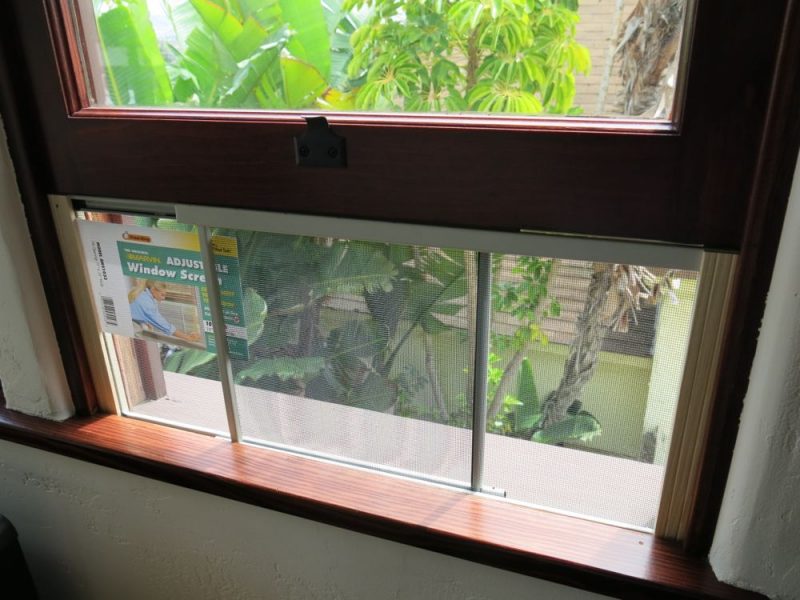

- #LARGE ADJUSTABLE WINDOW SCREENS HOW TO#
- #LARGE ADJUSTABLE WINDOW SCREENS ANDROID#
- #LARGE ADJUSTABLE WINDOW SCREENS WINDOWS#
With a little velcro, you can affix the screens to the inner window frame. I came up with a super easy way to secure the screens and still allow the window to be opened as much or as little as needed.
#LARGE ADJUSTABLE WINDOW SCREENS WINDOWS#
Since I live on the second floor and the windows overlook a busy sidewalk, I was also concerned about the screens falling out and hitting someone below, especially when I was removing the screens from the window. So if it rains, your only choice is to let your stuff get wet or shut the window completely. There are several trees in the front of the building that are home to some birds and squirrels who could easily stop in for a visit, so I decided that I definitely needed to pick up some adjustable window screens.Įven though the screens expand to fit the window, their fixed height is limiting.Īnd once they're installed, you can no longer adjust the height of the window opening. Library to calculate a WindowSizeClass based on the current window metrics with calculateWindowSizeClass().I recently moved into a new apartment and as great as it is, none of the windows have built-in screens.
#LARGE ADJUSTABLE WINDOW SCREENS HOW TO#
The example code below in Views Kotlin and Views Java shows an example of how to calculate the window size class based on the breakpoints and receive updates whenever it changes.Ĭompose-based apps should use the material3-window-size-class View-based apps should calculate the window size class based on the current window metrics provided by the Jetpack WindowManager library. Use window size classes to make high-level application layout decisions, such as deciding whether to use a specific canonical layout to take advantage of additional screen space. Window size classes map to the layout breakpoints in the Material Design responsive layout grid. As a result, the window size class is dynamic, and your app’s UI should adapt accordingly. While your app is running, device orientation changes, multitasking, and folding/unfolding can change the amount of screen space available. The window size class can change throughout the lifetime of your app. Foldables can have two different-sized screens individually accessed by folding or unfolding the device.
#LARGE ADJUSTABLE WINDOW SCREENS ANDROID#
On ChromeOS, Android apps can be presented in free‑form windows that are arbitrarily resizable. On mobile devices, split‑screen mode can partition the screen between two applications. The screen space available to your app can differ from the screen size of the device for many reasons. Physical devices do not guarantee a specific window size class. Rather, window size classes are determined by the window size available to your application regardless of the type of device the app is running on, which has two important consequences: Window size classes are not intended for isTablet-type logic. Note: Most apps can build a responsive UI by considering only the width window size class.Īlthough it can be useful to visualize size classes as physical devices, window size classes are explicitly not determined by the size of the device screen. Large unfolded inner displays in landscape Large unfolded inner displays in portrait Each size class breakpoint represents a majority case for typical device scenarios, which can be a helpful frame of reference as you think about the design of your breakpoint-based layouts.

Representations of height-based window size classes.Īs visualized above, the breakpoints allow you to continue thinking about layouts in terms of devices and configurations. Representations of width-based window size classes.įigure 2. Available width is usually more important than available height due to the ubiquity of vertical scrolling, so the width window size class will likely be more relevant to your app’s UI.

Available width and height are classified separately, so at any point in time, your app has two window size classes-one for width, one for height. Window size classes categorize the display area available to your app as compact, medium, or expanded. The breakpoints have been chosen specifically to balance layout simplicity with the flexibility to optimize your app for unique cases. Window size classes are a set of opinionated viewport breakpoints that help you design, develop, and test responsive and adaptive application layouts. Responsive/adaptive layouts provide an optimized user experience regardless of screen size, enabling your app to accommodate phones, tablets, foldable and ChromeOS devices, portrait and landscape orientations, and resizable configurations such as multi-window mode. To support as many screen sizes as possible, design your app layouts to be responsive and adaptive. Support for different screen sizes enables the greatest number of users and widest variety of devices to access your app.


 0 kommentar(er)
0 kommentar(er)
